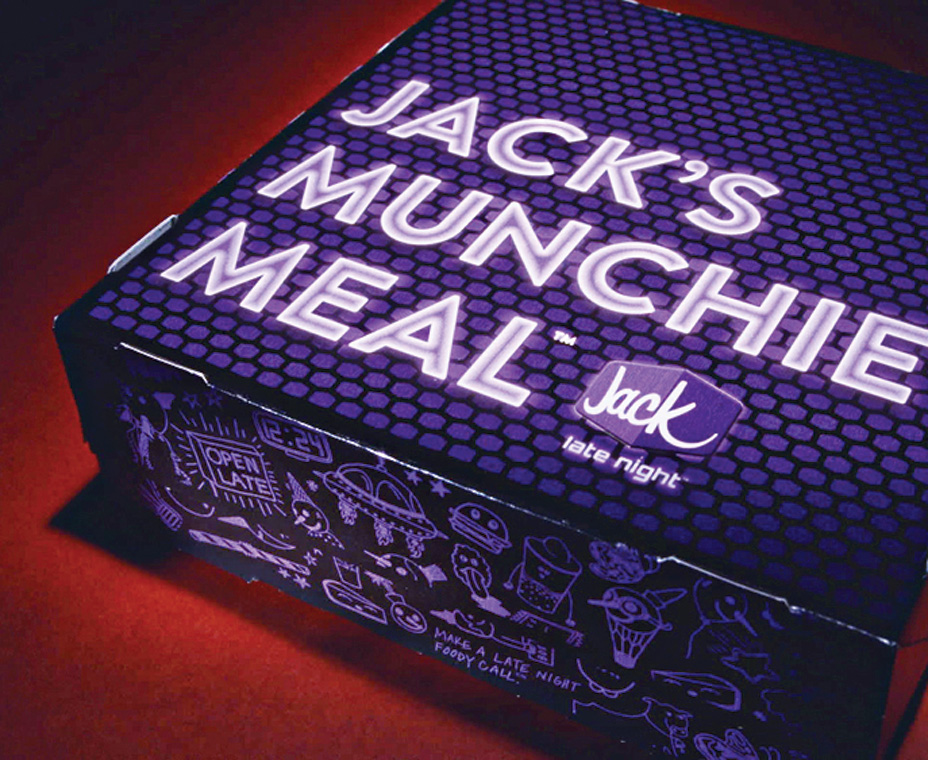There never was supposed to be a real meal—particularly one with an official name—that landed between dinner and breakfast. That time was supposed to be a time when folks slept, not ate.
That changed way back in 2005, when Taco Bell launched something it dubbed the “Fourth Meal.” At the time, the brand was simply responding to consumer demand for late-night munchies, even as it was trying to create and rule a new fast-food daypart. Today, however, the world of nontraditional dayparts has exploded into a multibillion-dollar business that’s got the biggest names in quick service vying for extra share of market.
Ironically, Taco Bell—which years ago planted its flag in both the late-night and mid-afternoon dayparts—is mostly fixated on growing morning business. McDonald’s, meanwhile, is making a play for more customers by pushing breakfast all day. And Jack in the Box, well known for its creativity in menu and marketing, is now marketing something it dubbed “Brunchfast,” an all-day breakfast-like menu.
“Clearly, our industry has not been organically growing,” says Lynn Hemans, senior director of business and social intelligence at Taco Bell. “To grow, you need to steal share by looking at outlets of growth that haven’t been focused on.”
Like, for example, late night. Or late afternoon. Or all-day breakfast. Or snack occasions.
The numbers are telling; many of them highlight the power that millennials have over the limited-service industry’s growing embrace of nontraditional dayparts. In a nation that’s snacking more and sitting down to eat real meals less, Taco Bell estimates that fully one-fourth of its sales revolve around two nontraditional dayparts: the period between 2 and 5 p.m. and the period after midnight.
“Customers want to eat when they want to eat,” Hemans says.
That’s especially true of customers under the age of 35. Coca-Cola recently polled millennials about their eating habits and discovered that 56 percent of them eat breakfast items at a time other than the morning; 30 percent replace one or two meals per day with a snack; 35 percent are more likely to have dinner at a restaurant offering happy-hour deals; and 53 percent of people 18–24 say they’d visit more frequently if restaurants stayed open later.
Some 43 percent of millennials say they snack more often than they used to. “Millennials want to set their own hours, so their eating and drinking habits tend to blur traditional dayparts,” says Daria Makhoukova, group director of strategy and planning for foodservice at the Coca-Cola Company. “One way operators could drive incremental sales is by offering two-item snack and beverage bundles. They should be sure to offer snack-sized portions in the mid-afternoon … but also during mid-morning and late-night.”
Jack in the Box is a long-time player in the daypart game. This is the chain that, back in 1969, jumped ahead of the fast-food industry by introducing a breakfast menu—then jumped further ahead with breakfast served all day in 1991.
In fact, the San Diego–based chain considers nontraditional dayparts to be “a part of who we are,” says Jen Kennedy, director of integrated marketing. The 2,200-unit chain has never been bound to the confines of traditional dayparts, she says. That’s why it’s promoted a strong late-night business for years, and in late 2016 introduced “Brunchfast.”
Among other things, the “Brunchfast” menu includes a Brunch Burger made with egg, cheese, bacon, and a sirloin burger patty served on a croissant; a Bacon & Egg Chicken Sandwich; and Homestyle Potatoes mixed with peppers. Jack in the Box promoted the new menu in an off-beat TV spot featuring mascot Jack and his wife, Cricket. The campaign is supported by digital and social media; there’s even a Brunchfast logo. “Bunchfast is an extension of our breakfast daypart,” Kennedy says.
At the other end of the spectrum, Jack in the Box rolled out Jack’s Munchie Meals in 2013, responding to late-night competition from McDonald’s, Wendy’s, and Taco Bell. In a nod to millennials who favor late-night dining, these Munchie Meals—loaded with lots of grub and a soft drink—were recently updated to also include a red-hot Sriracha Burger offering.
But Jack in the Box isn’t the only chain paying attention to millennial habits as it reinvents dayparts. So is Taco Bell.
The chain rebranded its Happier Hour in 2013 to put a special focus on that time of the day when it’s typically tough to lure customers. Taco Bell tried to put a millennial-friendly value play into the 2–5 p.m. time period by offering a bunch of its best-selling drinks for a buck during that time. Customers can even nab a Starburst Strawberry Freeze or a Mountain Dew Baja Blast Freeze for $1.
“Offering quick pick-me-ups enabled us to grow that daypart,” Hemans says.
Are there any nontraditional dayparts left to invent? That depends. Dayparts may someday be micro-divided into hourly time periods. Taco Bell, for example, recently opened its 7,000th store on the famous Las Vegas Strip. One of its hottest business hours is 3–4 a.m., says Rob Poetsch, a company spokesman. “We do amazing sales at that time,” he says.
Only in Vegas? Perhaps. Maybe that’s simply the magic hour when folks start to filter out of the casinos with both their wallets and stomachs on empty.
Or maybe it’s a new daypart.
This story originally appeared in the February 2017 issue of QSR under the title “The Daypart Do-Over.”









